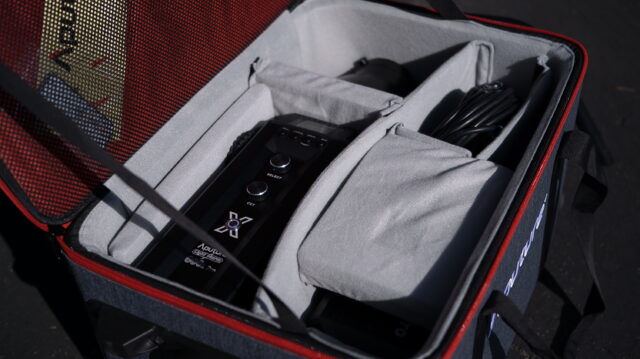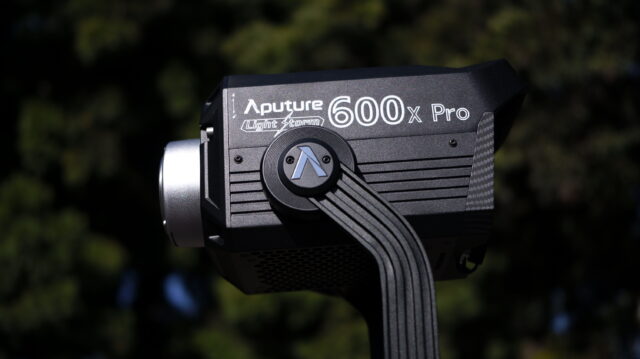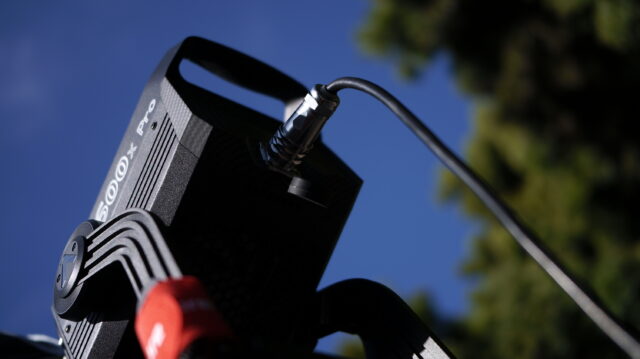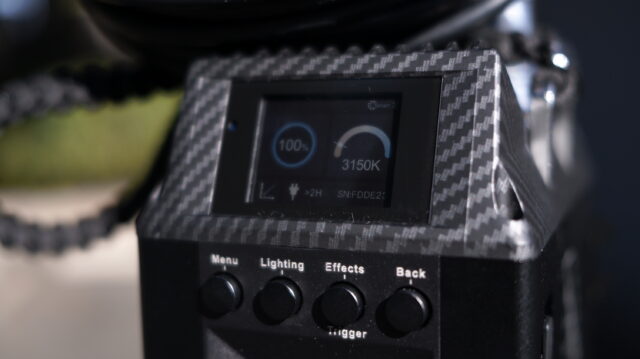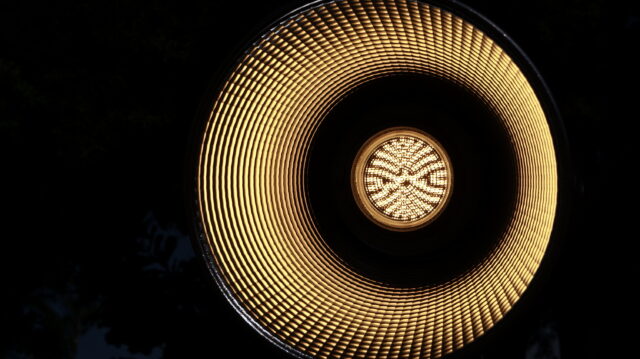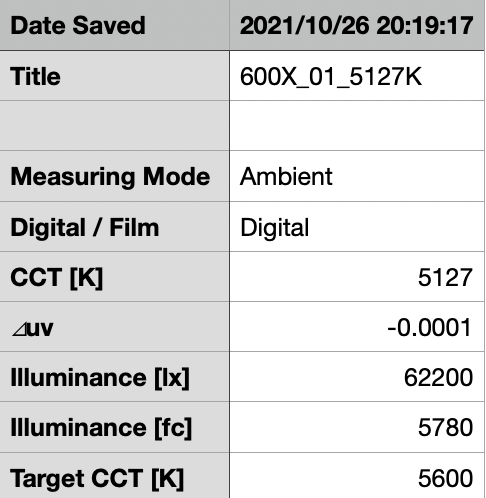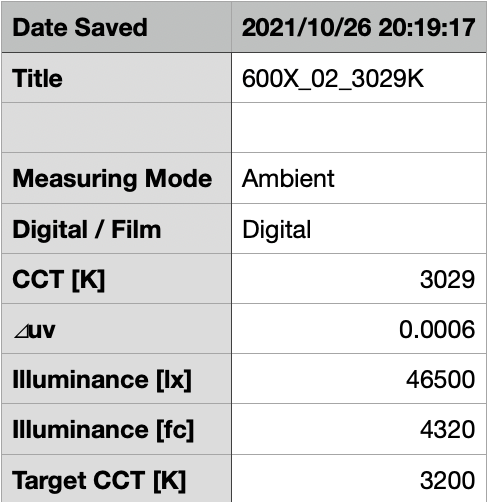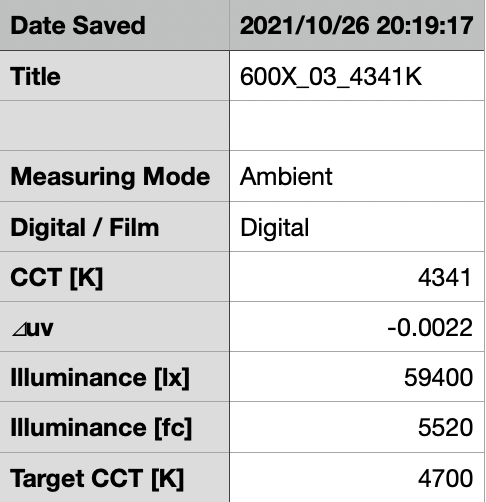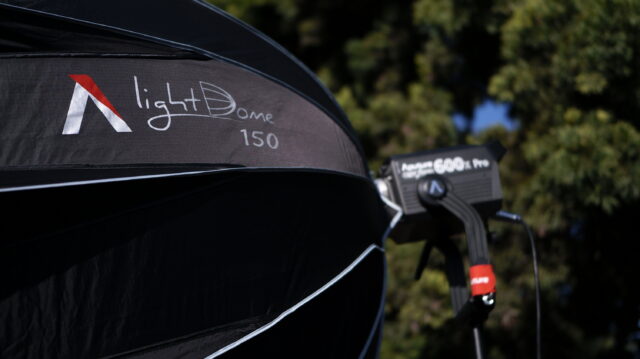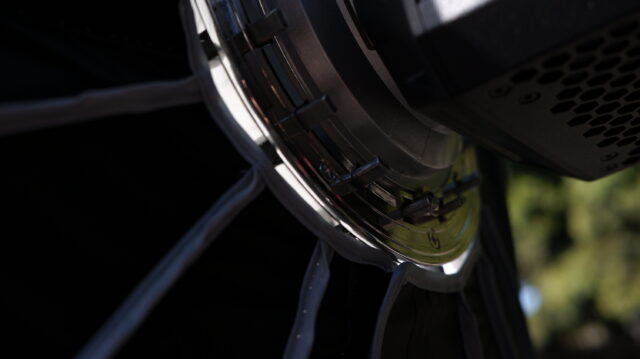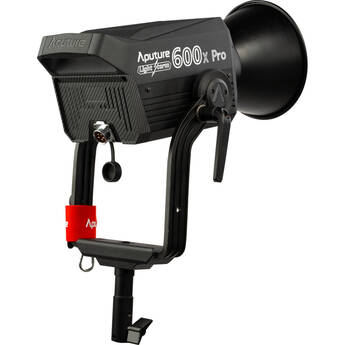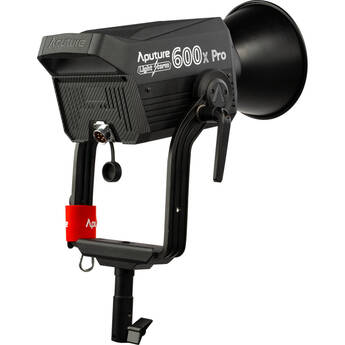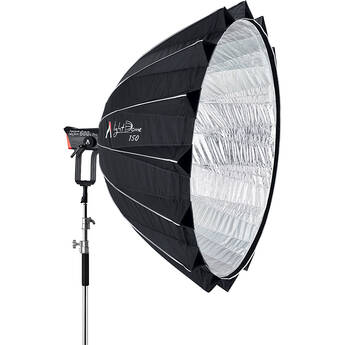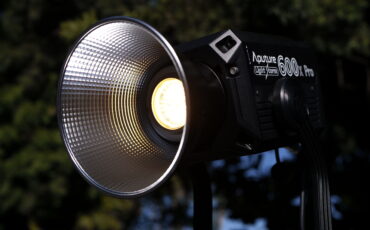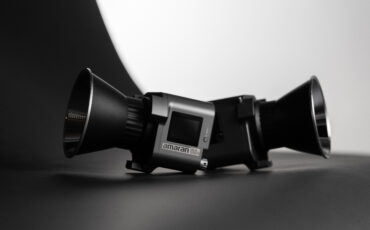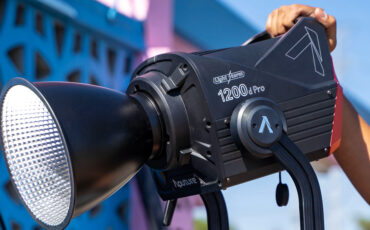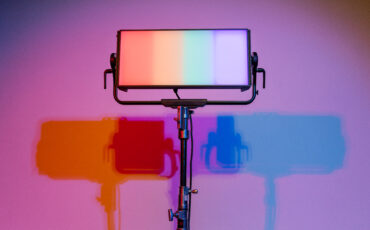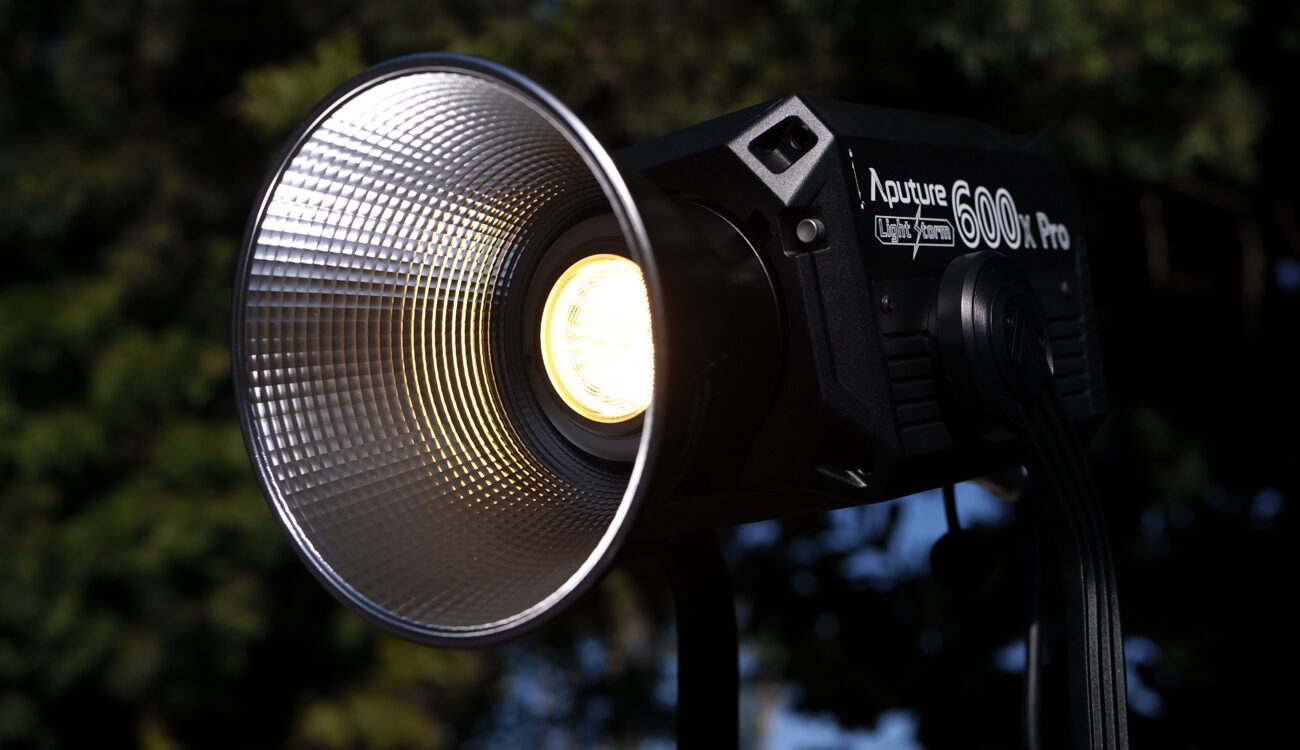
The much-anticipated arrival of Aputure lighting releases continues with a new LED Bi-Color version of the popular LS 600d Pro. This version is called the LS 600x. I took the LS 600x out for a spin over several weeks of testing alongside the Light Dome 150. Here’s my take.
Over time I’ve become comfortable using Aputure products on various sets and in all sorts of environments in the field. Reservations I had with their Pro focused first-generation made me initially skeptical about the brand. A long list of needed improvements (issues like slipping yokes and short head cables and mounts for the ballast) have now been addressed. Aputure has also updated the Sidus Link App with the result that’s it’s a handy tool for wireless control.
Aputure has also been innovating its entry-level amaran product line. For filmmakers, the good news is that the cost to lumen ratio has never been lower. Enter the higher-end $1990 LS 600x Bi-Color LED fixture complete with the Bowens S-Type mount and a kelvin range between 2700 to 6500K.
When I think of high output sources for filmmaking, I think of cumbersome, power-hungry, and expensive daylight-balanced HMI lighting technology. To alter the kelvin temperature of something like the popular Arri M18 or HMI fixture, you will need to gel the light — not in itself a tricky process, but it’s a step that must be completed before cameras can roll. The LS 600x Pro does away with that step. With a high output variable color temperature fixture like the LS 600x Pro, it seems pretty clear we’re on the way to a world without gels (at least the CTB and CTO gel).
ARRI Lighting Systems Control
Remembering not to add several HMI fixtures to rental orders but remembering to turn to multiple LED LS 600x’s and/or LS 600d‘s for shoots is something that will take time to get used to. Lately, on my shoots, the LS 600d Pro, in particular, has taken up more and more spots on projects I would have previously reserved for an HMI unit. Comment below if that’s been the case for you too.
For the reader, I’m guessing the big question here is will the LS 600d be the way to go, or is spending another $100 worth it for the Bi-Color version? Let’s dive in.
First Impressions of the LS 600x
The 40 lbs. LS 600x kit isn’t small and compared to the LS 600d Pro, the dimensions of the lamp head are slightly bulkier. It comes in an excellent wheeled, although soft, transport case. I would love to see Aputure develop hard cases or partner with a third party to create hard cases for some of their Light Storm products like the company has done with the Nova series.
I don’t see the soft case surviving heavy impacts. Still, it will probably do the trick for a few years for individual owners/operators or even a mid-sized rental operation–with professional handling. The case provides plenty of room for the core kit, which includes the 55-degree hyper reflector, head cable, AC cable, ballast, remote, and lamp head. There’s also a mesh pocket for additional tools or perhaps a few small pieces of colored party gel, black wrap, or diffusion.
The 10 lbs. lamp head of the LS 600x looks slick and has slightly wider dimensions than the daylight version. To add to the appeal of the product, the darker Aputure logo is a stylish change from the 600d Pro. I’m a fan of the curved yoke design, and I haven’t had any issues with the light slipping after a quick hand tightening of the yoke. There’s a small button release for any Bowens first-party or third-party accessory you might wish to use, and there’s also a small protector plate over the COB that cleans easily in the event of the odd bug strike.
At 24 feet or 7.5 meters, the head cable for the Aputure LS 600x Pro is longer than previous Light Storm fixtures, which means you don’t need to worry about having to mount the control box perilously high when raising the lamp head far off the ground. With the correct modifier, this light, in particular, can light a larger space, so you should expect to have to mount the fixture higher off the ground for space lighting.
Control of the LS 600x
As with all recent Aputure products, the LS 600x is controllable over Bluetooth using your favorite mobile device with the Sidus Link App. If you own an older Aputure product but are looking for Bluetooth control, I suggest giving the Sidus Link Bridge a look. We’ve covered the excellent Sidus Link App multiple times in previous Aputure reviews and announcements (simply use the CineD search tab for more), and the app is now available for free on iPad.
Aputure has recently teased plans for a Sidus Link Subscription service for various types of professional users. I hope the planned subscription service will provide real value and won’t place currently available features behind a paywall. Subscriptions can undoubtedly help fund additional updates and may help drive new features that previously might not have been worth the investment to develop. We’ll reserve judgment for when that subscription plan comes to fruition.
You also have the option of wireless or 5-pin wired DMX control of the fixture.
The UI of the control menu has improved over time, and the kelvin color wheel is in, well, color. I also like that the control box has a slightly upward angled screen, an improvement over the flat profile of the LS 300x control box that greatly enhances readability.
Everything in the menu is easy to navigate. You have access to a whole series of commonly used effects ranging from Lightning to Fire — with the ability to tune each effect to your liking by changing variables like frequency and flash intensity.
Overall Output and Color Temperature Readings
I grabbed a few measurements on my Sekonic C-700U Spectrometer (now updated with the C-800U) to see how accurately the LS 600x handled color temp (kelvin) and output (lx) from a distance of 3 ft. Here are my readings with a target of 5600K with the output set to 100%. The included 55-degree Hyper Reflector was attached for all these tests.
The first thing you may notice here is about a 30% dip in output when compared to the native daylight fixture like the LS 600d. This is normal and should be part of your calculations when choosing between the daylight or bi-color version. Beyond that, the reading of 5127K is slightly off the target of 5600K, though with the hyper reflector attached I expect a variance of about 300K from an accessory like that.
With a Spectrometer like the C-800U you can simply dial the kelvin on the fixture to be exact and conform with any accessory you’re using with this light.
Here’s a measurement from the LS 600x with a target of 3200K – again with output set to 100%.
A reading of 3029K compared with the 3200K target suggests this accessory combo is most accurate closer to the tungsten side of the range. This is an excellent result.
And finally lets set a target somewhere in the middle at 4700K.
We see a difference here of 359K between the target of 4700K and our reading of 4341K. This is will within a normal range of other Bi-Color lights that I’ve tested in the past.
Light Dome 150
While this review is primarily about the LS 600x, we would be remiss not to bring up the new Light Dome 150.
Released in tandem with the LS 600x and designed with larger Aputure fixtures in mind, the 5 ft. $269 Light Dome 150 is an excellent companion for the 600x in studio or at large locations. The price surprises me because the Light Dome 150 feels like it should be more expensive, but hey, you won’t find me complaining.
My favorite thing about the Light Dome 150 is a series of latches that lock into place. With minimum pressure, the latches connect the exterior of the Bowens mount ring with the light. In the past, with similar products, you may recall having to bend metal rods into small holes around the ring connecting to the light fixture. Personally, I was no fan of that system. It required more strength than I thought necessary, as well as patience to line up the rods – both in short supply during a chaotic shoot day. The new design eliminates those barriers making the setup time so much faster.
I love large soft light sources. They work well for interviews (depending on subject matter) and are absolutely fantastic in fashion or product. Plus, every actor loves you for using them. Aputure ships the Light Dome 150 with two types of diffusion: 1.5 and 2.5 stops, and it would be great to see more materials available for additional purchase. Maybe unbleached muslin?
Do you work mostly on travel shoots bouncing from plane to plane? Rather than the Light Dome 150 and the LS 600x, consider smaller fixtures like the LS 120d MK II alongside the Light Dome II or Light Dome Mini, all of which fit nicely in a rolling tripod case.
I do not suggest pairing the LS 600x/Light Dome 150 with a standard c-stand – in my opinion, this is a rolling combo stand setup. The Light Dome 150 also puts significant pressure on the LS 600x yoke, but I didn’t witness any slippage.
Your real purchase decision with the Light Dome 150 comes down to mobility and the size of the space you’re shooting in. Perhaps you already have a studio with a rolling combo stand? Great. Buy the Light Dome 150 because it’s made for you.
Final Thoughts
The LS 600x Pro does an excellent job filling out the Light Storm line. It brings high output Bi-Color capabilities to the niche between the 300x and the expected LS 1200D Pro. If looking only at pure output numbers, you’ll be most interested in the LS 600D Pro and the need for gels that comes along with it. For a faster-moving setup, the LS 600x might be the way to go.
Budget allowing, having both the LS 600D Pro and the LS 600x Pro makes the most sense in that they offer the most flexibility. Need to move faster or work on lots of travel shoots? Then I’d point you in the direction of the LS 300x/300d combo or suggest renting locally in different markets
What do you think? Will you be adding the LS 600x Pro to your kit? Let us know in the comments below!



